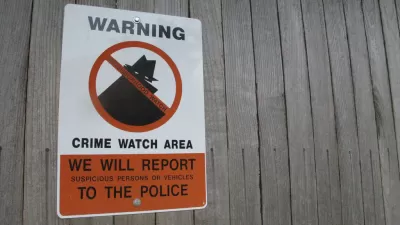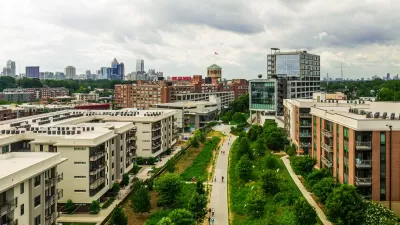Homicides are decreasing nationwide, but a federal study reveals that the rate has decreased about 17% in cities and increased by the same rate in suburbs. Two WSJ reporters look behind the numbers for the causes with a focus on Atlanta's suburbs.

Cameron Mcwhirter and Gary Fields report on the murder of an African immigrant who opened a store in a "violent area" in southwest Atlanta but was shot outside his "modest home on a quiet street" in the unincorportated are of Riverdale in Clayton County. They refer to a recent study of the federal Bureau of Justice Statistics and a May 2011 study by the Brookings Institution.
"Today, suburban murders, from domestic violence to robberies gone bad to massacres like the Newtown, Conn., school shootings, make up about a quarter of all homicides in the U.S., up from 20.7% in 2001, according to the BJS. The sharpest increases in violent crime appear to be in suburbs of cities, including those of Houston, Pittsburgh, and Atlanta. The violent-crime rate in Atlanta's suburbs rose 23% between 2000 and 2008, while the city of Atlanta's violent-crime rate dropped 49% (according to Brookings)."
Mcwhirter and Fields suggest that the increase in suburban crime are related to the demographic movement in and out of central cities.
"New suburban residents include people who moved from tough urban neighborhoods, lured in part by cheaper rents in some suburbs like Clayton County. Some were pushed out of cities like Atlanta by urban gentrification and public-housing demolition. Many hoped for less crime, but some who came were criminals."
While the media has been captivated by the increase in crime in Chicago, they have spent less time on the plummeting homicide rate in the nation's largest city.
Wendy Ruderman of the New York Times writes on Dec. 28 that "(m)urders in New York have dropped to their lowest level in over 40 years, city officials announced on Friday, even as overall crimes increased slightly because of a rise in thefts — a phenomenon based solely on robberies of iPhones and other Apple devices."
The prevalence of crime in fact may be among the most important aspects of urbanity, if not civilization.
“The essence of civilization is that you can walk down the street without having to look over your shoulder,” Mayor Michael R. Bloomberg said.
Contributor's Note: Access to article may be time-limited without subscription.
FULL STORY: Crime Migrates to Suburbs

Planetizen Federal Action Tracker
A weekly monitor of how Trump’s orders and actions are impacting planners and planning in America.

Maui's Vacation Rental Debate Turns Ugly
Verbal attacks, misinformation campaigns and fistfights plague a high-stakes debate to convert thousands of vacation rentals into long-term housing.

San Francisco Suspends Traffic Calming Amidst Record Deaths
Citing “a challenging fiscal landscape,” the city will cease the program on the heels of 42 traffic deaths, including 24 pedestrians.

Amtrak Rolls Out New Orleans to Alabama “Mardi Gras” Train
The new service will operate morning and evening departures between Mobile and New Orleans.

The Subversive Car-Free Guide to Trump's Great American Road Trip
Car-free ways to access Chicagoland’s best tourist attractions.

San Antonio and Austin are Fusing Into one Massive Megaregion
The region spanning the two central Texas cities is growing fast, posing challenges for local infrastructure and water supplies.
Urban Design for Planners 1: Software Tools
This six-course series explores essential urban design concepts using open source software and equips planners with the tools they need to participate fully in the urban design process.
Planning for Universal Design
Learn the tools for implementing Universal Design in planning regulations.
Heyer Gruel & Associates PA
JM Goldson LLC
Custer County Colorado
City of Camden Redevelopment Agency
City of Astoria
Transportation Research & Education Center (TREC) at Portland State University
Jefferson Parish Government
Camden Redevelopment Agency
City of Claremont




























